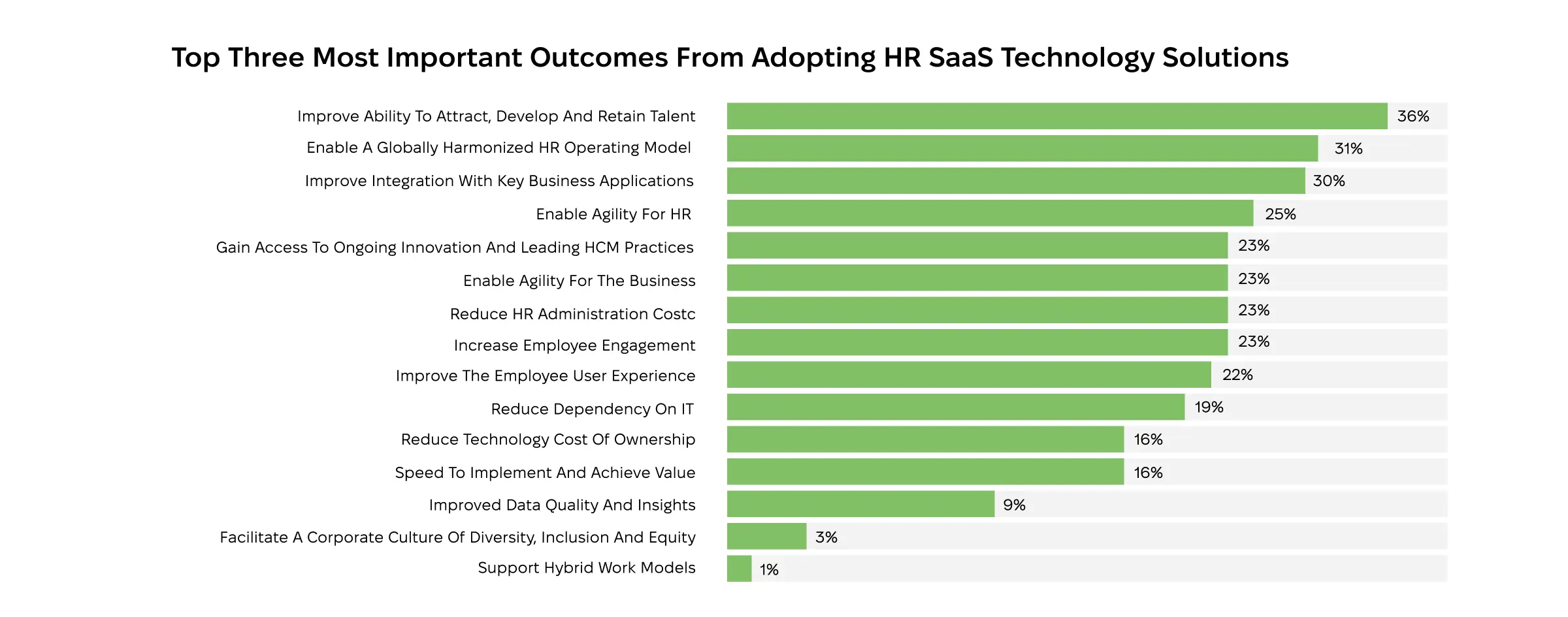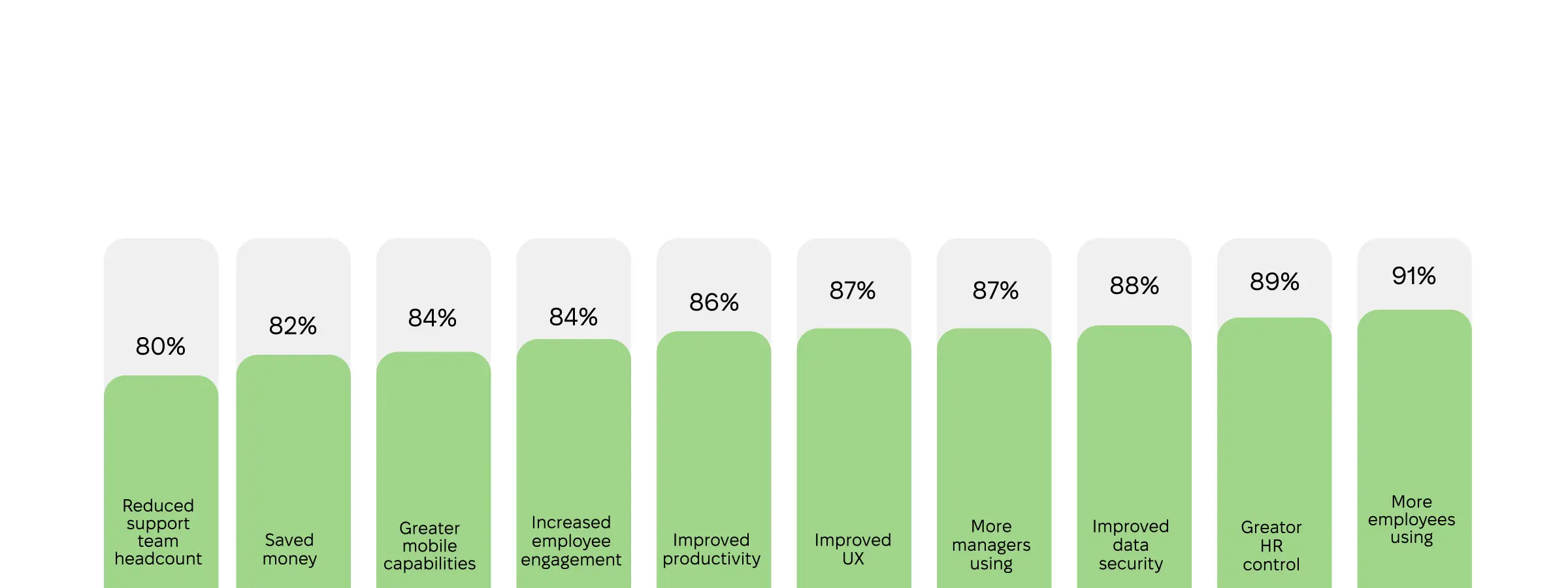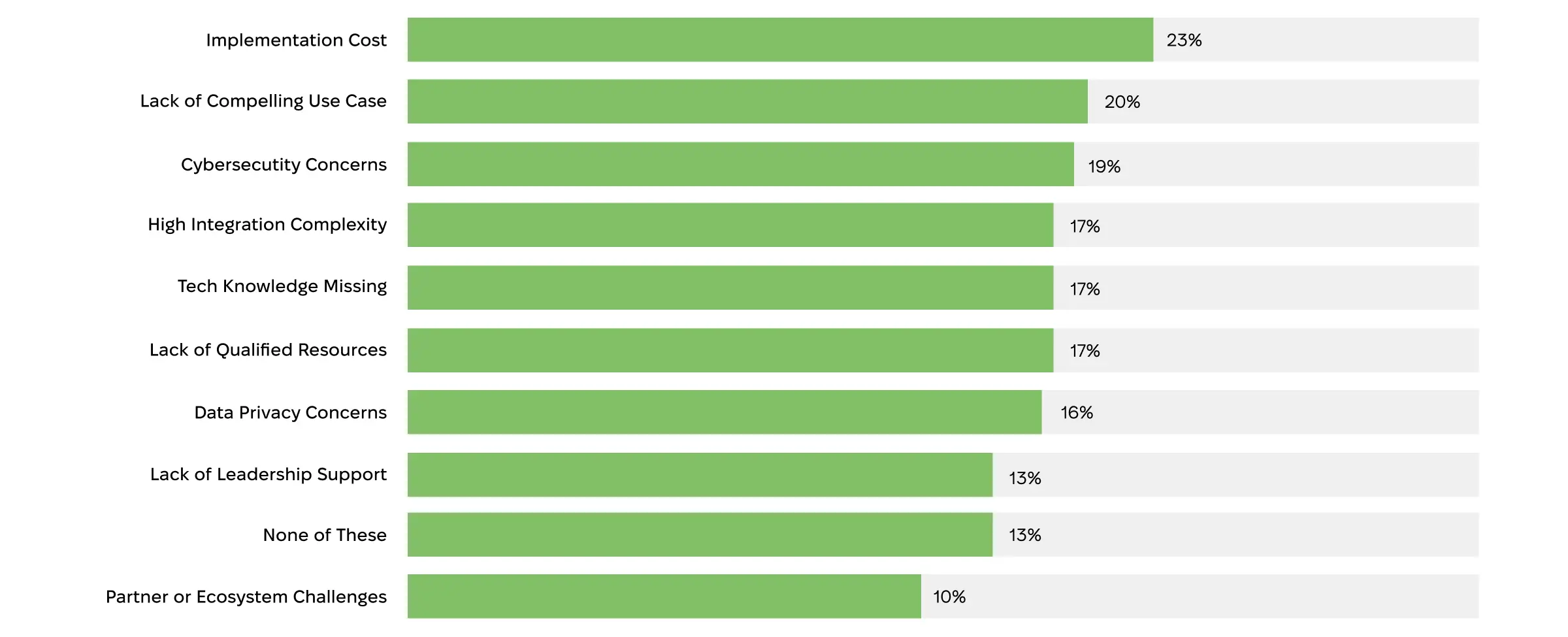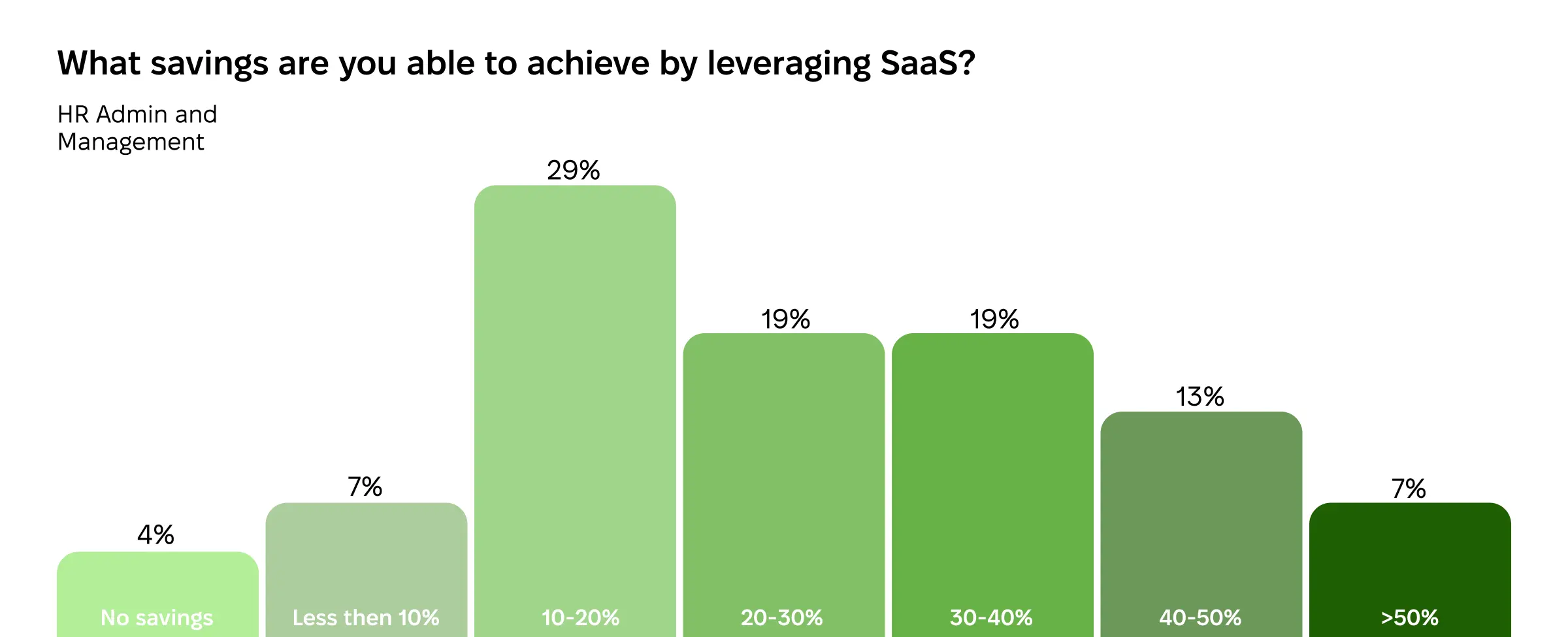Workforce management (WFM) platforms transform HR processes in SMBs, enterprises, and outsourcing agencies. There is a wide selection of different WFM solutions and their features. Cloud-based WFM solutions guarantee data security and enhance user experience, while AI in recruitment automation predicts talent demand peaks. Scheduling, time tracking, and AI-driven analytics are important WFM features that improve employee productivity. Adopting these technologies can streamline HR operations: they cut admin costs, streamline remote work, enable data-backed planning, and improve employee retention.
Businesses spend 42 days and around
$4,700 per hire.
The actual cost to hire a new employee can be 3-4 times the salary, highlighting the importance of reducing hiring costs.
Without a workforce management platform, you may spend $180,000 to hire an employee with a $60,000 wage. And
one in five
of these employees will likely leave your company within a year, losing you $120,000.
Research shows that bad hiring decisions result in
80% of employee turnover. As a result, most companies have unfilled positions and can’t fulfill customer demand. This
leads to low customer satisfaction and losses for you, overtime and poor working conditions
for workers. It’s a vicious cycle of losing employees and failing clients you can’t afford
in a rapidly evolving market.
WWhat can help? Workforce management platforms. They are by no means a panacea for all HR problems.
However, WFM solutions have drastically changed recruitment and HR operations. And they continue
to drive business value for SMBs, enterprises, and outsourcing HR agencies.
In this post, we’ll introduce essential WFM features and disruptive technologies. We’ll present the benefits of workforce management systems you can reap by adopting technologies disrupting the recruitment industry.

- Nine out of ten businesses save at least 10% on HR admin and management after WFM
adoption.
- Cloud-based HR solutions improve data security, UX, and mobile capabilities. They increase
employee engagement and productivity in over 80% of cases.
- Data analytics and automated recruitment processes help businesses predict and address demand peaks.
- Exoft experience spans from custom
business applications development
to offering ready-made WFM solutions.
Essential Features & Best Practices
Should you look for a ready-made WFM platform or hire developers to build a custom
solution? The answer depends on your budget and WFM needs. In the table below, you’ll find
essential features for an innovative workforce management platform.
| Feature |
Description |
|---|
| Scheduling |
Ensures the right number of qualified employees is present to complete required
tasks.
|
| Time tracking |
Monitors employees’ clock-in and clock-out times, locations, breaks, and work
activities.
|
| Absence tracking |
Handles sick leaves and vacations, personal leave requests, etc. |
| Overtime tracking |
Tracks overtime hours for fair compensation, legislation compliance, and workload
analysis.
|
| Data analytics and reporting |
Provides insights into employee work hours, absences, overtime, and productivity
to empower managerial decision-making.
|
| Legislation compliance |
Tracks employee engagement according to the Fair Labor Standards Act (FLSA) or
other regulations to prevent legal repercussions for employers.
|
| Communication |
Enables internal texting, calls, video chats, and polls to ensure effective
communication between employees and managers.
|
| Integrations |
Ensure smooth cooperation between departments using different software for
payroll management, budgeting, etc.
|
Applicant tracking, shortlisting, and interviewing features are also necessary for
workforce management in recruitment. At the same time, more companies are looking into
advanced off-boarding practices. These practices help turn leaving workers into loyal
alumni and boomerang employees.
Implementing workforce management tools for recruitment and daily operations always faces
friction. Without a proper transition period, new software adoption can cause operational
disruptions and employee dissatisfaction. Based on our
enterprise app-building guide
and experience with WFM adoption, the Exoft team recommends these strategies for smooth implementation:
- Set WFM adoption goals.
Think of the main reasons behind your business's transition and set measurable KPIs. For
example, if you want to reduce staff churn, WFM systems can reduce it through improved employee
satisfaction.
- Introduce employee and management training.
Host seminars and workshops that highlight the benefits for all parties. For instance, managers
will spend less time tracking employee performance. Personnel will enjoy a more flexible
schedule and have real-time access to overtime and paid leave numbers.
- Phase the new software in stages.
Start by introducing the WFM system for one department to assess the changes. Next, expand
the testing to other departments. You can also phase in the core features one at a time to
slowly train your staff to use them without causing much friction.
- Monitor and optimize operations.
Closely monitor workforce management solutions use cases. Collect employee and manager feedback
over the first weeks and months of implementation. Adjust your WFM settings accordingly or
request custom development adjustments. Finally, assess the KPIs and alter your adoption
strategy if they aren’t met or set new ones if they are.
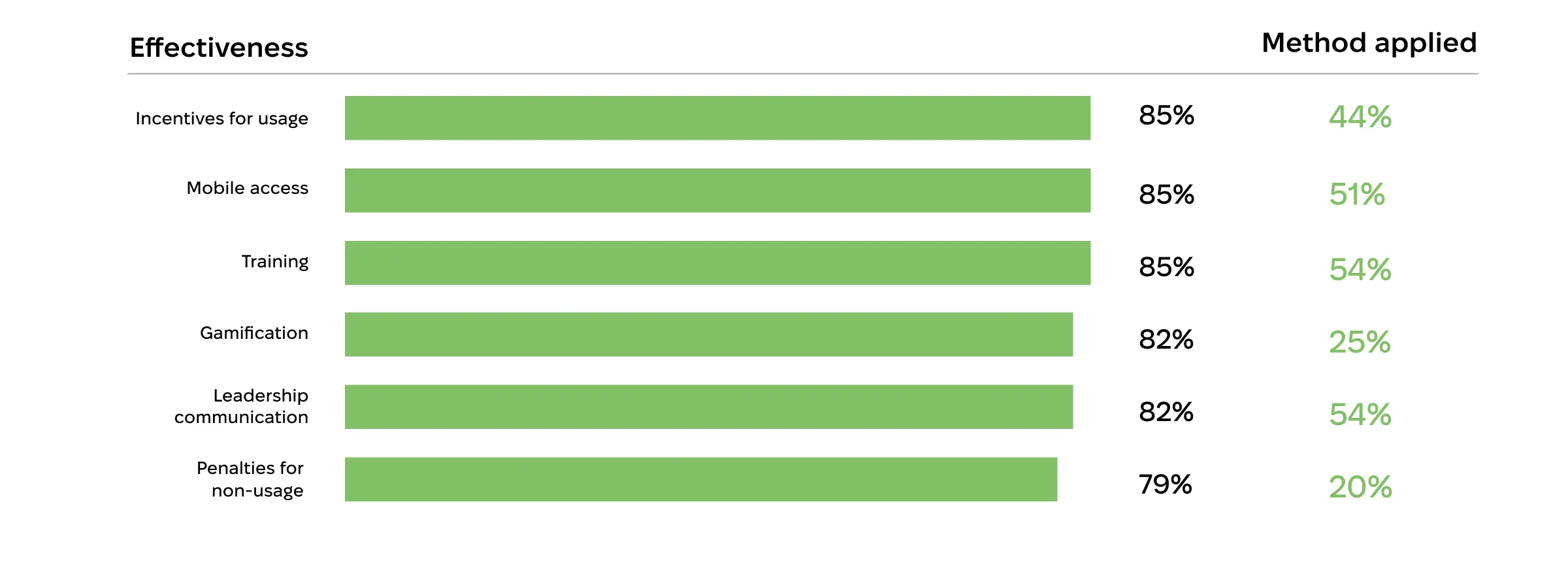
Technological Innovations Driving Disruption
Technology is critical to daily operations across 90% of businesses. Moreover, most
companies realize the value disruptive technologies can generate. So, let us introduce you
to three technologies currently disrupting the HR and recruiting industries.
Cloud-Based Solutions
Augmenting recruitment with workforce management platforms in the cloud has multiple
benefits over on-premises solutions, including:
- Real-time collaboration.
The HR managers can seamlessly operate across several locations and home offices, working
on job postings, application screening, interview settings, etc. Cloud-powered collaboration
is even more important after onboarding. It drives manager and employee engagement, especially
if native or cross-platform development solutions are mobile-friendly.
- Instant scaling.
On-premise systems require careful maintenance and steep upfront investments. Cloud-based
WFM infrastructure can be scaled up or down on short notice. As your business needs grow,
you can adjust your cloud storage and hosting accordingly and only pay for the services you
use.
- Data protection.
Cloud-based WFM solutions take full responsibility for hardware and server security. They
employ best practices for data protection, including data encryption, multi-factor authentication,
and password validation.
Big Data Analytics
Analyzing historical data on hires, employee performance, and lifecycle helps optimize
hiring decisions. WFM systems let businesses collect, structure, store, and analyze all
workforce data. For example, HR managers can assess the current personnel profiles to
decide if diversity hires are necessary. They can also analyze the relationship between
overtime, employee satisfaction rates, and personnel churn to suggest additional staffing
requirements. Our
staff augmentation tips
can help with that, too.
HR managers will need training to make the most of these workforce management technologies.
You may also need to customize reports and dashboards to produce necessary insights. One example
of custom WFM solutions is a
time-tracking tool
the Exoft team developed for a mid-sized consultant company. This solution increased scheduling
and billable hour transparency. Moreover, hiring decision-making improved thanks to insights
derived from time and attendance tracking reports.
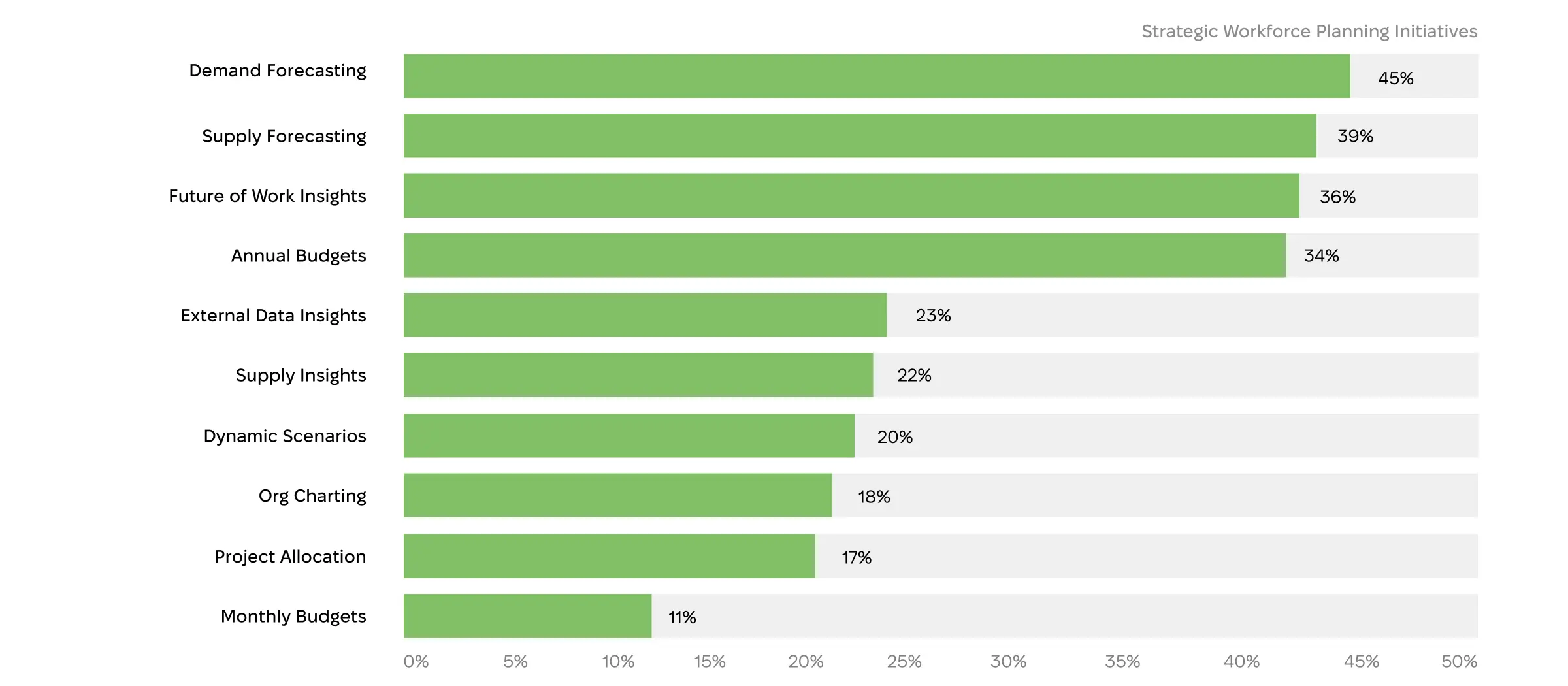
Artificial Intelligence and Machine Learning
23% of new employees
leave companies within 12 months of getting hired. They don’t have the relevant skills or experience
to fill the positions. Sometimes, their responsibilities differ from the job posting description.
ML and AI can help address both. For one, AI hiring tools can craft job descriptions based
on actual tasks required for the job. ML algorithms can also assess candidates’ applications
and pre-screen them according to specific parameters. Both will speed up the recruiting process
and help businesses address peaks in demand.
Still, it’s important to carefully monitor the screening algorithms and use
IT support services
to avoid
introducing bias.
Transformative Impact of Workforce Management Platforms
The future of recruitment technology is reshaping the recruitment landscape and overall human resources and workforce management efforts. Here are a few examples of businesses benefits of adopting
disruptive technologies in workforce management and recruitment:
| Benefit |
Evidence |
Source |
|---|
| HR administration and management cost reduction |
89% of businesses implementing SaaS HR tech platforms saw 10%+ cost reductions.
20% of companies reduced their HR admin expenses by over 40%
|
2023 HR Tech Survey |
| Improved HR performance and integration |
Businesses' improved ability to attract, develop, and retain talent (36%),
globally harmonized HR operating model (31%), and enhanced integration with key
business applications (30%) were among the top three most important outcomes of
adopting SaaS WFM solutions.
|
2023 HR Tech Survey |
| Improved remote work management and productivity |
37% of businesses started monitoring remote productivity and performance and saw
its positive impact.
|
PwC HR Tech Survey 2022 |
| Advanced strategic workforce planning initiatives |
WFM solutions help businesses with demand (45%) and supply (39%) forecasting,
future of work insights (36%), and annual budgets (34%).
|
Aptitude Research 2023 HR Tech Mid-Year Trends Report |
| Increased uses by employees and managers, improved engagement and productivity
|
Cloud WFM solutions promote usage by employees (91%) and managers (87%). They
also increase employee engagement (84%) and productivity (86%).
|
PwC HR Tech Survey 2022 |
There are also many benefits of implementing a workforce management platform for
recruitment. They range from
increased automation, critical for fast scaling to address demand peaks to reduced administrative burdens and,
as a result, lower hiring costs. Moreover, WFM platforms facilitate job posting and onboarding.
Improving employee retention rates and reducing the hiring workload are also common effects.
Final Thoughts
The future of recruitment is here, and you can no longer afford poor hiring decisions.
They cost too much time and money. And their long-term repercussions for customer
satisfaction affect your bottom line. WFM platforms transforming hiring processes help
automate routine tasks and let hiring professionals focus on matching applicants to your
business needs.
Moreover, disrupting HR technology, like cloud-based WFM solutions, advanced analytics, and
AI-powered automation and personalization, will improve overall HR performance throughout your
company. It is known to boost employee engagement and productivity. It can also enhance remote
work and software development team management and reduce HR admin costs. In our
tenant migration case study,
we demonstrated how migrating data to a cloud-based environment can streamline
operations and improve decision-making for HR teams.
To estimate the ROI of implementing a WFM solution for your business,
contact the Exoft team
and schedule a consultation.
Frequently asked questions
How do WFM solutions integrate with existing HR tools?
WFM solutions support integrations with the most common HR tools and other business software through APIs. For example, most WFM platforms will work seamlessly with payroll management suites, external communication tools, and project management software. However, integrations with your custom-built software may require additional development spending.
Can I customize the WFM platform to specific recruitment needs?
Some WFM platforms offer customization options. Still, they are usually reserved for enterprise-level clients. Moreover, customization can drive up the cost of the WFM solution and reduce its ROI. Sometimes, custom MVP vs MCP development might be cheaper than customizing an off-the-shelf solution. Contact us to schedule a consultation and estimate the cost of a custom WFM solution for your business.
Can I expect a specific ROI after implementing WFM solutions?
Most WFM solutions cannot guarantee a specific ROI. It’ll depend on too many factors to provide a precise estimate. Still, WFM adoption reduces costs, increases productivity, and lowers employee churn. The overall positive effect can result in 5-figure savings throughout the first year of adoption. It will depend on your business size, the choice of a WFM platform, and its pricing. Contact the Exoft team to schedule a consultation and estimate an ROI for your business.
Can you share any WFM case studies or success stories?
Exosft worked out a digital time-booking tool for a medium-sized consultancy. This web-based solution helped consultants keep track of billable and non-billable hours. The platform led to increased client satisfaction thanks to transparent billing. Explore all Exoft case studies to learn more about our expertise in WFM development.

